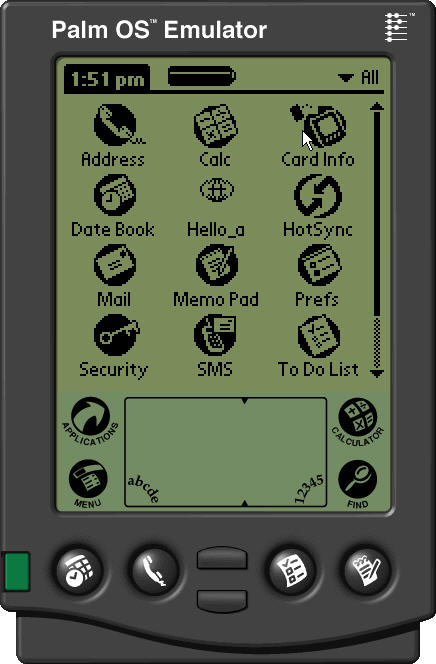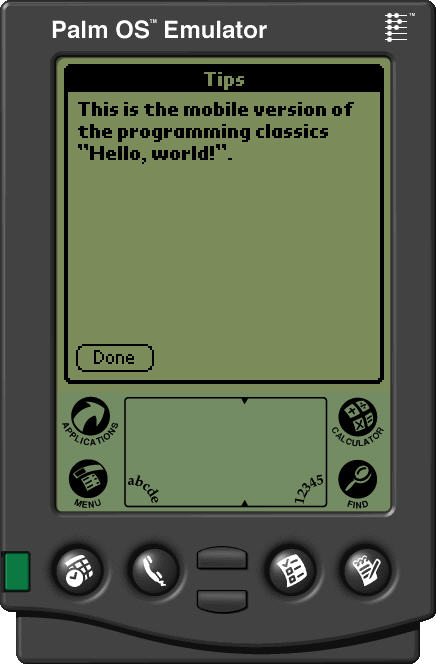Slide 7.4: Palm OS Resource Editor (cont.)
Slide 7.6: Demonstrations (cont.)
Home

|
Slide 7.4: Palm OS Resource Editor (cont.) Slide 7.6: Demonstrations (cont.) Home |

|
Hello_a, which also prints the message “Hello, world!”, but with few more features such as button.

|
Go to b screen after clicking on Hello_a icon.Note that the default icon  is replaced by the image is replaced by the image  . .
|

|
Go to a screen after clicking on OK button.Go to c screen after clicking on i help.
|

|
Go to b screen after clicking on Done button.
|
Hello_a.h and Palm OS resource file Hello_a.rcp for the above interface:
| Hello_a.h | |
|
| Hello_a.rcp | |
|